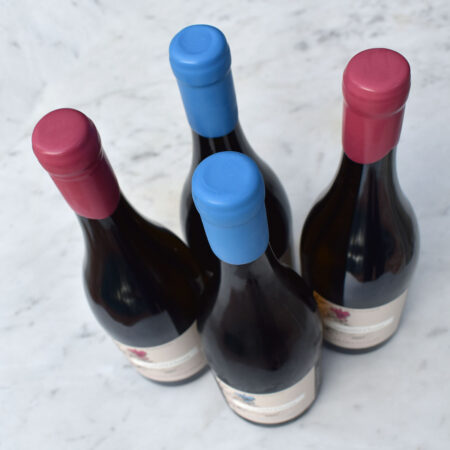Description
Notes from the Winemaker:
Vineyard
At the top of a hill with direct south-facing exposure, the climat Les Gréchons is located in the commune of Ladoix-Serrigny. The term Gréchons comes from the word Grève, from the latin ‘grava’ meaning sand or gravel. Given its name, It is no wonder that the vine stocks grow on a soil composed of friable rock, fine scree, sand and gravel — a terroir that is beneficial for cultivating vines.
Shallow soil with a silty to silty-clayey texture, which came about from the weathering of the formation of Pernand marlstone deposits. Although the silty texture is conducive to strong soil erosion, the surface’s stone content plays a protective role against this.
Vinification
On receiving the grapes, we carefully sort them at the winery. The grapes are treaded and gently pressed in a pneumatic press. In order to avoid crushing the grapes—which would harm the quality of the grape must, and to avoid extracting the vegetable part of the cluster, we prefer to obtain the juice at low pressure. The run-off is then clarified by the force of gravity, eliminating the roughest dregs, which would negatively affect the quality of the future wine. Some of the juice is then drawn off into stainless steel vats, and the rest is placed in French oak barrels. Alcoholic fermentation begins thanks to the activation of the indigenous yeast (yeast naturally present in the grape must).
Elevage
Ageing is an essential step for achieving a quality wine, and this is why we take special care in selecting our barrels using wood from the forests of Allier and Vosges. The Ladoix 1er Cru Les Gréchons is designed to be kept for many years, it is aged 15 months in 50% new wood casks (228L Burgundian tuns). We strive to preserve the aromatic uniqueness of this nectar by bringing out its personality and not trying to conceal it. The cask is a true ally for ensuring the wine’s complexity; it bestows the cuvée with a certain style and elegance.
Tasting Notes
Ladoix 1er Cru les Gréchons expresses aromas of peach, pear, citrus fruits, white flowers and roasted hazelnuts. The mouth is taut and precise, as often is the case with great Burgundy wines, it also presents a good bite like the “Corton”
Accompaniments: Seafood risotto, salmon sauerkraut or salmon steak cooked in a paper parcel (papillote), fillet of sole, trout with olives, Norman-style pork…
“Discreet but perceptible wood influence sets off mildly exotic aromas of pineapple, white peach and dried apricot. The succulent and seductively textured flavors coat the palate with dry extract before culminating in a bitter lemon inflected finish. 89-91” -Burghound.com





